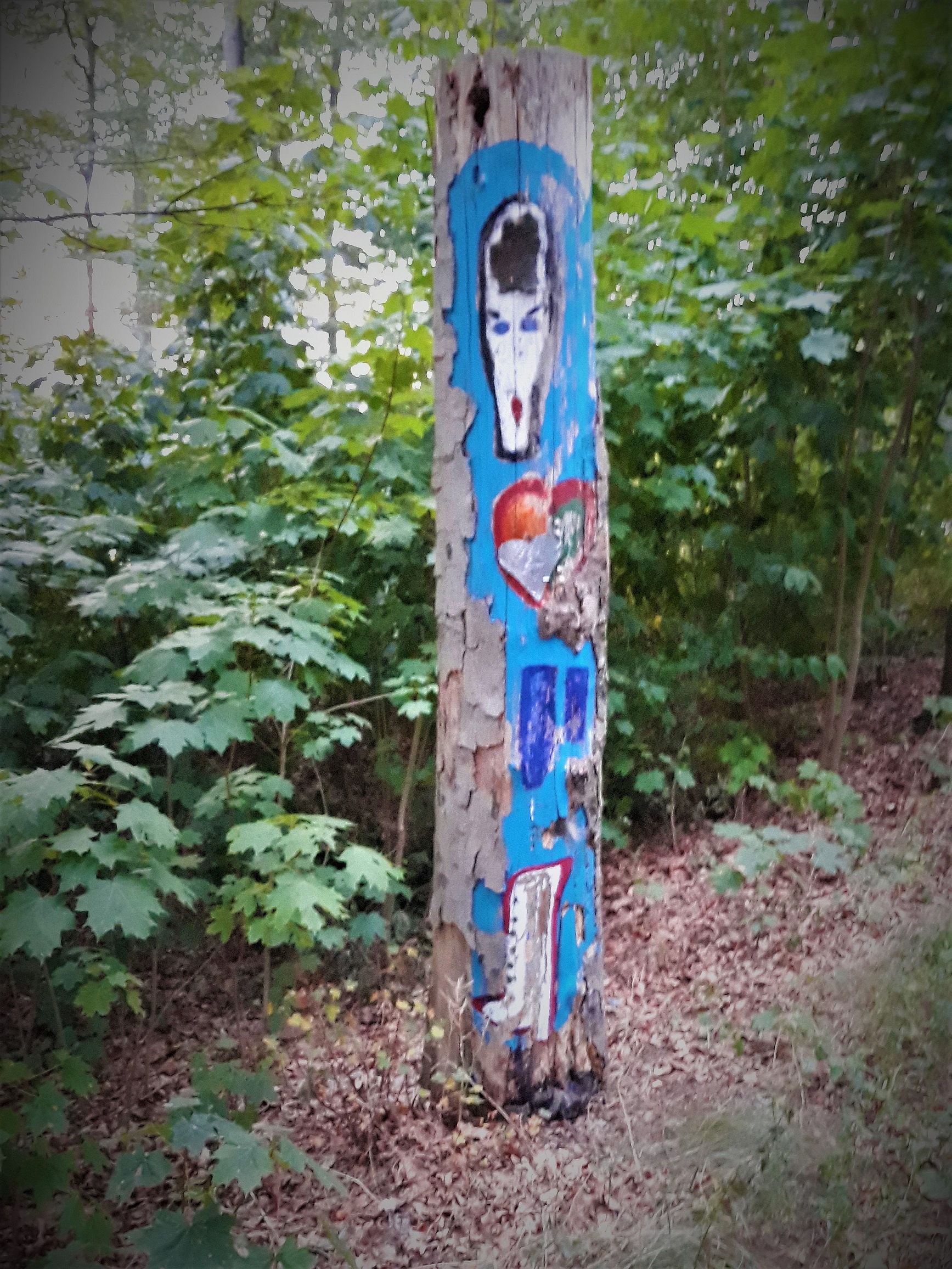
On the 10th August 2020, I saw the totem pole out of the corner of my eye. I was travelling on the “Road to Sacrow” in Krampnitz. Krampnitz is a district of the state capital Potsdam (Brandenburg) in Germany. I asked the driver to halt the car. I had to take a photograph of this interesting object. There wasn’t a bronze plaque nailed on the painted bark. This artwork has no recorded history.
In a picturesque location, surrounded by forest and water, you stood about nine feet up from the soil. Your age is unknown. You shield your growth rings from view. But you are not hollow of secrets, I sense this. Your kind, Norway maples, have the traits of a district tyrant and the merits of a saint. Maples are long-lived and fast-growing, reaching giddy heights of one hundred feet. With a life span of up to two-hundred years, you feel at home in European regions. For you are vigorous, adaptable and can provide a cool shade. I have titled your image A Berlin Totem Pole until another name comes to mind suitable to your prowess. My instinct tells me you are a guide of sorts, a landmark, a map, and a warning sign to would-be arsonists who crave to strike a match in your realm. Not one flame will ravage the forest’s canopies on your watch. As a divine whisper of truths, messages ring out on the wind like well-arranged songs. They brush through the King’s Forest all the way to the quaint Sacrow Palace. This was King Frederick William IV’s abode, a hidden pearl in the green.
Norway maple is the greatest ubiquitous maple in Europe. The timber is used to make furniture, flooring, and musical instruments. Some claim that Stradivarius violins are made from the Norway maples. No ear can thwart the instrument’s tenor. Everyone is enchanted by the high-quality tone; it is produced by a single mode of vibration of air inside the violin’s body. The resonance emits through the violin’s f–holes.
In the fall, Norway maples are ablaze with yellow leaves. The foliage dazzles like miniature suns. It is no wonder why artists, scholars, and perhaps the King himself chose you as a guardian and protector of the King’s Forest.